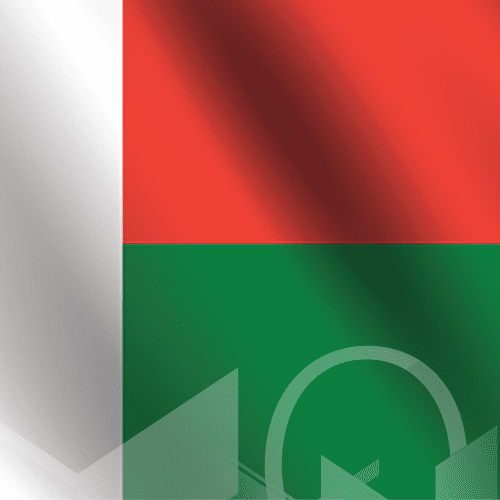
Filter
Sample Reports
Related Links
Madagascar
Madagascar is a large island in the Indian Ocean off the eastern coast of southern Africa, east of Mozambique. It has a total area of 587,040 square kilometres, a population of 30.3 million, and a GDP of US$18.2bn which is expected to grow by 3.9% in 2025. Inflation is running at 8.5%.
Its currency is the Malagasy Ariary.
Malagasy politics have been unstable since the return to electoral politics in 2013. While the 2018 election of President Andry Rajoelina brought some stability, the 2023 election was marred by low turnout and a significant opposition boycott. Government corruption and a lack of accountability persist. Defamation and other laws restrict press freedom. Authorities deny permits for demonstrations and disperse some that take place. Lawlessness and poverty are persistent, particularly in the south.
Madagascar has the world’s largest reserves of sapphires, as well as unexploited deposits of coal, lithium, uranium, bauxite, iron ore and vanadium, while chromite, cobalt, copper, gemstones, gold, graphite, nickel, ilmenite, rutile, zircon, granite, dolomite, limestone, marble and gypsum are also produced.
Madagascar was Africa’s second-largest cobalt, third-largest chromite producer, fifth-largest ilmenite and zircon producer and the world’s fourth-largest producer of graphite.
Most of the country’s mining companies are privately-owned, while state-owned Kraomita Malagasy (KRAOMA) is Madagascar’s only chromite mining company. In 2019, Australian company Base Resources announced the results of a feasibility study for its Toliara project in Madagascar, which indicated the US$442m operation could produce an average of 780,000t per year of ilmenite, 53,000t of zircon and 7,000t of rutile for 33 years. Artisanal miners produce gemstones, gold, nickel, chromite, copper, cobalt, ilmenite, rutile, graphite and zircon, with about 70% of the country’s estimated 500,000 artisanal miners believed to be involved in gold mining.
The service sector, particularly tourism and telecommunications, has been the primary driver of growth, including through increased international air traffic, new airlines, and a new telecom licensing regime.
Madagascar supplies approximately 80% of the world’s vanilla as well as other agricultural products including coffee, sugarcane, palm oil, cloves, cocoa, rice, cassava, beans, bananas and peanuts. It also derives revenue from fishing, forestry and hydropower.
Renowned for its biodiversity and its unique flora and fauna, Madagascar is often described the 'Galapagos of the African continent'. With its exceptional natural heritage, including magnificent tropical beaches, the island has been earmarked for development as a premier tourist destination.
Despite its abundance of natural resources, it remains one of the poorest countries in the world and is classified by the United Nations (UN) as one of the world's least developed countries. According to the World Bank, 92% of the population lives on less than US$2 per day. The predominantly rural population suffers from chronic malnutrition, with 50% of all children under the age of five suffering from stunting.
Sources: Who Owns Whom sector reports, CIA Factbook, African Development Bank, World Bank, Trading Economics, African Statistical Yearbook and IMF. ?>
Company Profile
There is no data available at the moment
Sector Research
There is no data available at the moment
The Construction Industry in Madagascar
Full Report R 1 900.00(ZAR) estimated $ 112.61 (USD)*
Industry Landscape R 1 330.00(ZAR) estimated $ 78.83 (USD)*


